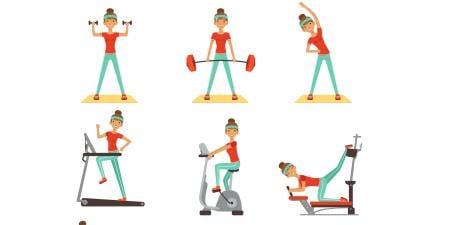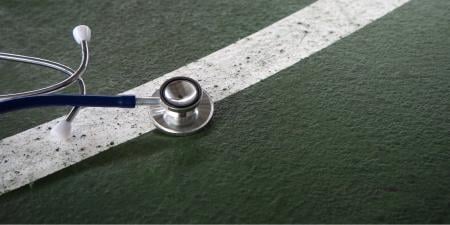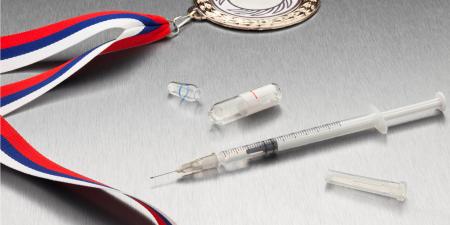Case
Dr. Wendy Wilson's next appointment is with Steffi Jones, a youngster in her family practice who has comes to the doctor's office to get her medical forms signed for a school team checkup. Dr. Wilson is asked to approve 12-year-old Steffi's participation in gymnastics team activities. Her parents are with her, and they talk excitedly about how talented their child is at gymnastics. Both parents love sports. Steffi already trains after school on a regular basis with a local gymnastics club and has done so since she was 5 years old. Her parents believe she will do well in a regional amateur competition. She now has a chance to win the recognition that will enable her to train with an Olympic-class coach.
The physician congratulates Steffi on her accomplishments. Dr. Wilson is troubled by the thought of the pressure that is likely to be placed on Steffi to perform well, both in sports—two teams seems like one too many—and in school. Can the child meet the physical and mental demands of practice and competition at a more elite level? Dr. Wilson asks Steffi about this, and finds out she knows she is placing her gymnastics ahead of her schooling, but gymnastics is what she thinks she's good at, so she doesn't mind. She knows some of her teachers are disappointed and she's heard there's going to be a lot more homework this year. Steffi is also starting to show signs of puberty. Dr. Wilson discusses this with her and asks her about her nutrition. Steffi admits that she needs to stay thin to compete but is not concerned about the impending changes in her body. Dr. Wilson decides it's beyond her duty to intervene at this point, and somewhat reluctantly certifies the child for participation in school sports since she is in excellent physical condition.
She suggests to the parents, however, that they keep a watch on their child and monitor whether they think they're overcommitting her to too many sports activities. Dr. Wilson mentions the possibility of overuse injuries along with the physical and psychological demands of competing at this level. Would the Joneses be willing to consider dropping one of the teams? Her concern is met by surprised looks, and she gets the brush-off from the Joneses, who tell her not to worry--they'll be careful with Steffi. They thank her for the signed forms and leave. The doctor has a feeling they may not be back if she pushes too hard on this, but she is still concerned about Steffi.
Commentary 2
This case illustrates very nicely the dilemma encountered by increasing numbers of pediatricians and, on an almost daily basis, by practitioners in sports medicine. The role of exercise and proper diet as a contributor to good health of growing children is well accepted and has been documented in numerous studies. In recent times, however, the growth of organized sport has added a new and sometimes difficult dimension to this area. Organized sports require systematic training, but training improperly or in excessive amounts is now known to be a very important contributor to a new pattern of injuries encountered with increased frequency in the sports-active child. These overuse injuries are a result of repetitive microtrauma such as running along the ground, overhand throwing, doing repetitive pliés or back walk-overs. They can just as certainly break tissue as any acute traumatic injury.
Unfortunately, the study of sports injuries in children is still in its infancy. Studies have generally focused on acute traumatic injuries, primarily because they are easy to measure, often resulting in emergency room visits. By contrast, overuse injuries are more insidious, are often seen in the office setting, and the diagnosis is often delayed or not fully appreciated. It is now well known that the causes of overuse injuries are multi-factorial. These "risk factors" include anatomic malalignment, muscle tendon imbalances, shoe wear, playing surface, and, probably most important, maltraining of the child, particularly with respect to the amount or intensity of exercise.
If one focuses on this particular risk factor for overuse injury—training—it is evident that all too little information has been published on the topic. We still are in the rather primitive situation, as physicians, of recognizing "how much was too much" after the fact and after the injury has occurred. In particular, if one is intent on practicing evidence-based medicine, it is very difficult indeed to give scientifically based opinions regarding how much training a given child at a given age in a given sport should do.
Providing sound medical advice for the child athlete is particularly difficult. Such advice for the child athlete is given, of necessity, to the parents who are, one hopes, in a position to make informed choices for their children on such important areas as diet, schooling, and exercise.
Coaching for youth teams is usually voluntary, with no requirements for specific education in sports safety and certainly no requirements for certification in sports safety or training at the present time. In addition, and in contrast to the high school or college situation, preparticipation evaluations are not required, and no additional health resources such as athletic trainers exist at this level. As a result, the advice given to parents may be very inconsistent.
This case study, that of a young gymnast who is participating in both club gymnastics and school gymnastics, is particularly illustrative because it is one of the most controversial issues we encounter in our own sports medicine clinic here at Children's Hospital, Boston. The real issue in this particular case is how much is enough and how much is too much. The call to increase physical activity in the Physical Activity and Health Report of the Surgeon General (1996 and 2000), has recommended that children get at least one hour of vigorous exercise a day. A number of recent studies including one about to be published by our group have found that children who do vigorous exercise in the range of 6 to 8 hours a week in sports or dance do indeed maintain healthy levels of strength, flexibility, and body composition.1,2
How much is too much?
On the other end of the spectrum, it is unclear how much training is too much in organized children's sports. This is particularly relevant in individual sports such as figure skating, gymnastics, or swimming (as opposed to team sports), where increased volumes of training have extended downward to younger and younger age groups. In our practice we certainly have young gymnasts training 25 to 30 hours per week. Some children can sustain this level of training without deleterious effects on their health, while others succumb to overuse injuries. One of the raging controversies about gymnastics, as with any aesthetic sport, is whether the high volume of training and the often associated nutritional deprivation can result in a permanent retardation of growth and maturation. This is truly controversial, with some experts arguing that the smaller stature of the female gymnast in particular is a result of selection rather than maltraining and malnutrition. Often after these young gymnasts stop training for periods of 3 to 6 months during recovery from an injury, they experience a growth spurt and show progressive sexual maturation during the rehabilitation period. This suggests that there is indeed an inhibition of normal growth and maturation in many of them.
Given the lack of conclusive scientific information regarding the relationship between increased training and injuries, the practicing physician must rely on clinical observation and experience. I visited the sports training centers in East Germany prior to its reunification with West Germany. Anthropometric and physiologic observations at the Leipzig sports school suggested that 20 hours per week of training was probably the ideal for increasing proficiency in a given sport while still minimizing the relative risk for overuse injury. Above 20 hours a week, the incidence of injury appeared to increase across many sports, including individual sports. In one of our own studies of figure skaters, we found a near linear relationship between overuse injury and hours of training per week.
Based on these observations, simply put, we recommend that in general a growing child should not train more than 20 hours per week. If parents decide to increase training beyond this level we recommend that their child be evaluated by a sports medicine specialist on a quarterly basis, with particular attention given to body composition and the potential for occurrence of overuse injuries such as stress fractures, apophysitises, and back problems including spondylolysis. There certainly are children who can train in the range of 28-30 hours a week and sustain no apparent deleterious effects. These special cases of course may be in the minority.
In summary, a pediatrician or family physician attempting to safeguard the health of the elite child athlete, in this case a young gymnast, faces a daunting task. Clearly in this case the physician's gut instinct that the child is at risk of overtraining would appear to be correct. Vague generalizations, however, about "not doing too much" or "cutting back" will not have much effect on this family. In such a circumstance, the physician would be wise to arrange a referral to a sports medicine center or specialist's clinic where a more measured and credible training and nutrition formula can be set up for this child.
References
- Goran MI, Trueth MS. Energy expenditure, physical activity and obesity in children. Ped Clin NA. 2001;48(4):931-953.
-
Epstein LH, and Goldfield, GS. Physical activity in the treatment of childhood overweight and obesity: current evidence and research issues. Med Sci Sports Exerc. 31:S553-S559,1999.



